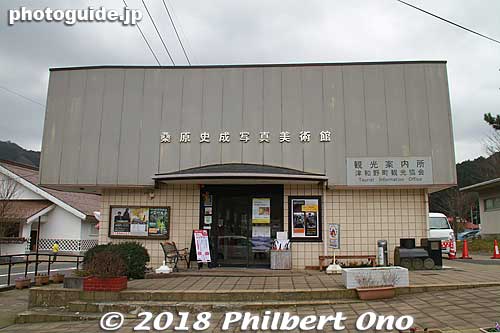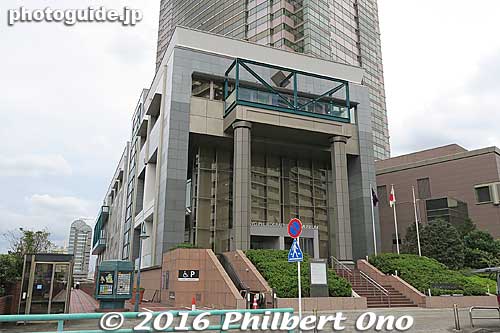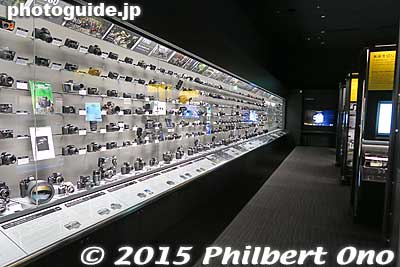Updated: May 10, 2022
What is PhotoSpaces?
Listings of Japan’s museums, galleries, photo salons, and other exhibition spaces (such as department stores) which hold photography or camera exhibitions regularly or occasionally.
Centering on the Tokyo area, Tokyo Art Beat provides excellent listings of current exhibitions at photo exhibition museums, galleries, and other spaces.
What types of photo exhibition spaces are there in Japan?
Basically, we can categorize exhibition spaces as follows:
- Photo galleries (Free or rental)
- Art galleries
- Museums (public and private)
Almost all photo and art galleries have free admission, while museums usually charge admission.
Where’s the exhibition schedule of the photo galleries and museums?
PhotoSpaces does not provide exhibition schedules. In English, you can find exhibition schedules as follows:
- The Wednesday edition of The Japan Times daily newspaper provide exhibition information for major art and photo exhibitions in the major cities.
- A site called Tokyo Art Beat keeps track of photo exhibitions centering on Tokyo.
In Japanese, you can find exhibition schedules as follows:
- The gallery or museum’s website (if available)
- Major Japanese camera magazines.
Exhibitions run for only one to two weeks at most galleries. It is much longer at photography museums.
What should I know before visiting a photo museum or gallery in Japan?
You should make sure that the place will be open. The gallery or museum can be closed on any day of the week. Most are open on weekends and holidays (see list below), but others are not.
For large museums, arrive at least 30 min. before the closing time. Otherwise, entry might not be permitted. Also note that on the final day of an exhibition period, the gallery may close earlier than usual.
What days are national holidays in Japan?
New Year’s Day (Jan. 1)
2nd Mon. in Jan. (Coming-of-Age Day)
Feb. 11 (National Founding Day)
Feb. 23 (Emperor’s Birthday)
Mar. 21 (Vernal Equinox)
Apr. 29 (Showa Day)
May 3 (Constitution Day)
May 4 (Greenery Day)
May 5 (Children’s Day)
(The week-long period spanning Apr. 29 to May 5 weekend is called “Golden Week.”)
Third Mon. in July (Marine Day)
Mid-August (Obon summer vacation)
Third Mon. in Sept. (Respect-for-the-Aged Day)
Sep. 23 (Autumnal Equinox)
Second Mon. in Oct. (Sports Day)
Nov. 3 (Culture Day)
Nov. 23 (Labor Thanksgiving Day)
Year end and New Year’s period refers to the last few days of the year (around Dec. 28-31) and the first few days of the year (around Jan. 1-4). Many museums are closed during this period.
Note that if a national holiday falls on a Sunday, Monday becomes the holiday.
How long do photo exhibitions run?
At most galleries, one to two weeks is the average exhibition period. It is much longer at photography museums.
What about maps to the photo museums/galleries?
See Tokyo Art Beat’s Venues page.
Lastly, check the museum or gallery’s Web site to see if they have a map in English (they would have a map in Japanese). PhotoSpaces may provide Web site URLs for museums and galleries.
How do I hold a photo exhibition in Japan?
Basically, there are several ways to exhibit in Japan:
- Use a rental gallery where you pay money to rent the space for a certain period.
- Apply for an exhibition at one of the free photo galleries operated by the major camera makers.
- Enter and win a major photo contest whose winners are given an exhibition.
- Become famous enough to be invited by a museum or gallery to hold an exhibition
- Become friends with a gallery owner who is willing to give you an exhibition.
- Participate in local art festivals or exhibitions.
- Negotiate with department stores, coffee shops, and other local public establishments which may allow you to show your photographs.
If you are rich enough to rent a gallery, it’s quite easy. Just contact the gallery and reserve a time slot. Be prepared to pay around 20,000 yen per day to rent the gallery. The minimum rental period is usually 7-10 days. Some rental galleries require certain standards in the quality of the work to be exhibited. If your work does not meet their standards, you might be rejected. Exhibition-quality prints may also be required. The gallery may also take a large commission (as much as 50%) on any print sales. You will also have to pay for frames/matting and publicity postcards. The total bill will be considerable.
A cheaper (but more difficult) way is to apply for an exhibition at one of the galleries operated by a camera maker such as Fuji Film, Canon, Nikon, and Leica. Find out the deadline (usually every month or once every few months) and entry rules, then submit the required number of sample photos. If you pass the judging, you will be notified of an exhibition slot which is usually about a week long and a year in advance. You are competing against many other people, so the chances of getting in are pretty slim. Places like the Nikon Salon have applications in English. Most other galleries require you to communicate in Japanese only.
If you’re a famous photographer, you may be invited to exhibit in Japan by a major gallery or museum. That’s when you got it made.
Having a gallery connection is also a secure way. If you know a gallery owner or know a friend who knows a gallery owner, you may be given an exhibition if the owner likes you and your work.
Some small cities like Kamogawa in Chiba are very art-oriented and welcome participation from the public or foreigners during city-sponsored art events. If you get involved in your local community, there may be local venues to show your work. Sometimes there are exhibitions where anybody can submit a photo. For example, the Month of Photography Tokyo event has the 1000 Photographers’ Exhibition every year for this purpose.
Japan also holds many, many photo contests. There’s even a magazine called “Photo Contest” which lists all the photo contests that are held. Some of them are major competitions from which major photographers made their debut. Besides an exhibition, the winners get a lot of media attention.
*Also see an excellent article by Tokyo art critic Monty DiPietro on trying to hold an exhibition in Tokyo. He even writes, “Forget it” was the response I got from most of the Tokyo-based artists, and gallery and museum people I queried on how a North American might arrange a Tokyo exhibition.”
And oh, if you do not live in Japan and want to exhibit in Japan, you should find someone in Japan to help you or represent you. The person will have to do all the translating and paperwork submissions for you. It might be difficult to do everything from overseas.
How do I make a phone call in Japan?
All phone numbers shown in PhotoSapces are for calling within Japan. To call from outside Japan, dial Japan’s country code (81), then the local area code without dialing the first zero. For example, to call or fax (03) 3280-0033 (Tokyo), dial 81-3-3280-0033.
Also, toll-free numbers (usually starts with 0120) work only within Japan. Note that most people in Japan cannot speak English, so be prepared to communicate in Japanese.



